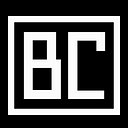Reflections on Two Years as a UI/UX Designer in Advertising Agency
A different lens from a designer with a non-design background
Tracing my origins
I didn’t start with a design background. I was taking information systems major in college and worked as a project management officer at an IT consulting gig in 2018. Then, I dove into the UI/UX design world after a 6-month bootcamp in 2021 and became part of VML Indonesia, previously known as the Wunderman Thompson Indonesia for two years.
Early six months of twists and turns
So, after six months, I jumped into a few projects, tripped up a bit, got some feedback, and tried my hand at loads of new stuff. And surprise, reality hit me, and it wasn’t all sunshine and rainbows like I thought it would be. But hey, it’s not all bad; got some high-fives too. Still, my early career felt like a total rollercoaster
As I take a moment to reflect, I’ve made a few notes on the initial obstacles I encountered:
1. Domain knowledge limitation
When I agreed to join the agency, I thought CX was simply another term for UI/UX Design. However, throughout the projects, I encountered a multitude of methods such as Design Workshops, UX Audits, Analogous Inspiration, Customer Journeys, and others that I hadn’t encountered before. This realization that the field was more extensive than I initially thought triggered Impostor Syndrome.
So, looking at this concept model, it kinda sums up where I was at with my knowledge, especially compared to what the agency usually works on. But you know what? Realizing I’m just a small fish in a big pond? It’s all good. Makes me feel like I’m in the right spot.
2. Rapid context switching
Wow, this agency grind is something else. Back in my project management days, it was manageable with just two projects on my plate. But now? It’s like I’m juggling between 3 to 6 projects at any given moment. It’s a bit of a struggle, it’s tough to concentrate due to various interruptions such as a sudden meeting when doing deep work, which affects my focus, my input in discussions and keeping up with the team’s pace.
According to research, context switching costs more stress, frustration, time pressure and effort. And yes, that is exactly what I feel Hahaha.
3. Creative Block
To give you an idea, our projects mostly push us to be creative and craft designs that are interactive and engaging, while still aligning with business goals and getting stakeholder approval.
Now, back to my obstacles in this aspect.
It happens to me all the time to staring at an empty Figma screen, haha. It’s a huge pain because it messes with my productivity. I end up scrolling endlessly for UI ideas.
Two concerns:
- Design: How far can we stretch the creative aspect in visuals & interactions?
- Tech: Can we realistically develop this with our current resources and timeline?
Why? Because we hit roadblocks in these two aspects. Sometimes the interactive and visual inspirations don’t work out in the UI design, and other times the client loves our design, but the tech team can’t make it happen.
540+ days of improvements
Working on 20+ projects, dealing with several clients, and processing a ton of feedback, I’ve seen improvement in a few areas. Here are the two key areas I’ve identified, based on the three challenges I mentioned before:
- Enhanced Skillsets
My workflow is getting smoother — I’m producing better work and doing it faster. Plus, I’m upping the quality by leading design critiques, making design decisions, brainstorming with the team, and working on design pitch projects that cover audits and strategy. - Better Jugglers
I’ve figured out how to handle my ever-changing calendars to deal with my workload. This means I can regulate my energy levels, stay dialled in during discussions, and feel way less stressed about everything going on around me.
Well, what did I do to improve?
It’s not a one-size-fits-all scenario. I’m constantly honing my methods through numerous iterations to discover the most effective approach. Let me delve into it based on the three challenges mentioned earlier, and hopefully, you’ll find some valuable insights in it.
Limited domain knowledge
Here are my top two approach to tackle the challenges:
1. Communicate with intent,
There was a time when I used to easily feel swamped by new challenges, constantly fretting and imagining worst-case scenarios. But as I grew personally, I learned that there’s nothing wrong with communicating openly. I mean, why not try to gather all the answers you need? It can benefit both you and the team by establishing clear expectations together.
Transform your confusion & concern into a set of questions. Then, get it out from your head by asking the team.
2. Jump straight into the mud to find the error
I get it, many people worry about messing up when starting out. But making mistakes is part of the process. If you’re nervous, talk to someone experienced for advice. Then, dive in and give it a try. You’ll stumble, but that’s how you learn and improve.
Rapid Context Switching
Used to be a major hurdle, complicating the approach with trial and error and time investment. Nonetheless, here’s my strategy:
1. Leave room for flexibility
It might sound like a simple concept and the most basic aspect of time management. But don’t overlook the fact that everyone starts their day with goals and intentions. Establishing expectations for unforeseen events is crucial. This way, you begin your day with flexibility and a prepared mindset.
This flexible time, also known as buffer time, can be incredibly useful for various tasks. Whether you’re guiding whiteboard sessions, conducting design critiques, or organizing design workshops, having a little extra space ensures you can safeguard your time effectively.
2. Be transparent
Let’s put it in a case, following an extended and complex meeting, I may feel mentally exhausted from processing a large amount of information in a short period. Here’s my response:
Set the expectation with the team, that I’m not 100% concentrate and need to slow down.
Ask any questions and don’t hesitate to pause the discussion if anything isn’t clear. Another approach could be holding onto your question for the Q&A session (if available) or discussing it post-meeting, recognizing that it may impact your time for other tasks.
Feel free to compile collaborative notes, aiming to not just record the meeting’s agenda but also to list any questions you might have. These questions can then be tracked and responded to by other team members.
Encourage yourself that it’s normal to struggle with keeping up due to limited capacity. Don’t be too harsh on yourself. Remember, knowing your own limits is vital.
3. Hemingway Bridge methods
I utilize Hemingway Bridge technique to maintain my momentum while juggling diverse contexts across various projects.
In gaming terms, it’s similar to continuing from the last saved point in the game, but with the additional step of taking note of different elements to aid in continual progress.
The way it works is quite simple, basically you note few aspects in the end of your day, this is the formula:
- Next steps
- Roadblocks you need to resolve
- Intentions for your next working session
- Final thoughts
This formula is adjustable depends on how your context and situation.
The idea of the Hemingway Bridge is to stop working only when you know what the next step will be.
Creative Block
This has been a huge challenge for me on the actual project. After two years and multiple iterations, I’ve figured out the two best strategies to streamline the process a bit.
1. Get feedback ASAP.
I need to set the expectation better with your peers and leaders on the design process and involved them in every steps, so I will get a quick feedback to do an improvement.
We solve tech issues by consulting them during the concept phase. This heads off future problems and keeps them informed about our design plans, so they can manage resources and schedules in advance.
2. Sharpening visual sense
This bit is abstract and needs observation to build taste. Even if you’re not super creative, you need to develop this skill. I struggle with this a lot and often can’t tell if my work is good. So, I made a visual library on Figma with separate pages for mobile and desktop references and a practice page.
Here’s how I organize the page structure: I separate it by sections. This approach works well for me since I have a systematic mindset and view UI design like assembling a puzzle, section by section.
Another option is to organize it by industry, case-by-case, or even by brand. Basically, use whatever method works best for you.
To wrap this up
I want to give my heartfelt thanks to everyone on the Customer Experience team — Tobie, Tasha, Rara, Debbie, Tika, Clarissa, Novi, Fathur, Kezia, Cheryl, Romi, Adit — and also to everyone on other teams who I can’t name individually.
For giving me a chance to grow. My God is with all of you in the best life scenario as possible

